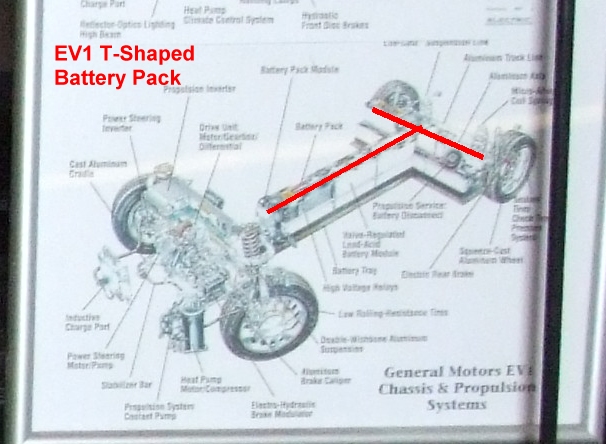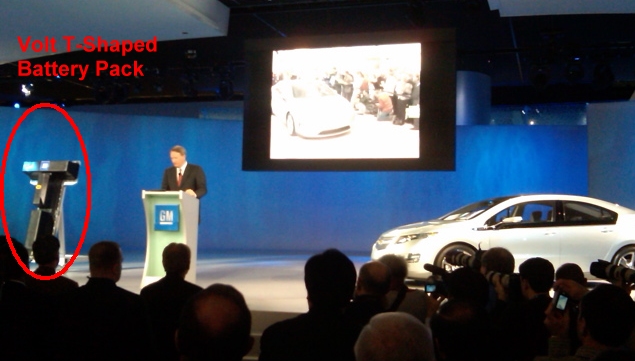Frank -
Quote:
Originally Posted by Frank Lee

I doubt it's a "legacy" feature.
I'd guess the batt pack is there for mass centralization, and they also chose to NOT go under the floor with the pack to keep seating low for aero, among other things.
|
I mean legacy in the sense that GM engineers are applying the same design solution they applied in the EV1, most certainly for the very reasons you are stating :


They also had EV1 hybrid prototypes as early as 1999 :
General Motors EV1 - Wikipedia, the free encyclopedia
Quote:
EV1 series hybrid
The series hybrid prototype[65] had a gas turbine engine APU placed in the trunk. A single-stage, single-shaft, recuperated gas turbine unit with a high-speed permanent-magnet AC generator was provided by Williams International; it weighed 220 lb (99.8 kg), measured 20 inches (50.8 cm) in diameter by 22 inches (55.9 cm) long and was running between 100,000 and 140,000 rpm. The turbine could run on a number of high-octane[citation needed] alternative fuels, from octane-boosted gasoline to compressed natural gas. The APU started automatically when the battery charge dropped below 40% and delivered 40 kW of electrical power, enough to achieve speeds up to 80 mph (128.8 km/h) and to return the car's 44 NiMH cells to a 50% charge level.
A fuel tank capacity of 6.5 US gal (24.6 L; 5.4 imp gal) and fuel economy of 60 mpg-US (3.9 L/100 km; 72 mpg-imp) to 100 mpg-US (2.4 L/100 km; 120 mpg-imp) in hybrid mode, depending on the driving conditions, allowed for a highway range of more than 390 miles (627.6 km). The car accelerated to 0-60 mph (96.6 km/h) in 9 seconds.
There was also a research program that powered the series hybrid Gen2 version from Stirling engine based generator. The program demonstrated the technical feasibility of such drivetrain, but concluded that commercial viability was out of reach at that time.
EV1 parallel hybrid
The parallel hybrid variant featured a de-stroked 1.3 L turbocharged DTI diesel engine (Isuzu Circle L), delivering 75 hp (56 kW), installed in the trunk along with an additional 6.5 hp (4.8 kW) DC motor/generator; the two motors drove the rear wheels through an electronically controlled transaxle. When combined with the AC induction motor which powered the front wheels, all three power units delivered a total output of 219 hp (163 kW), accelerating the car to 0-60 mph (96.6 km/h) in 7 seconds. A single tank of diesel fuel could keep the car running for 550 miles (890 km) with a fuel economy of 80 mpg-US (2.9 L/100 km; 96 mpg-imp).
A similar technology is used in the 2005 Opel Astra Diesel Hybrid concept.
|
A bird in the hand ... *sigh*
CarloSW2